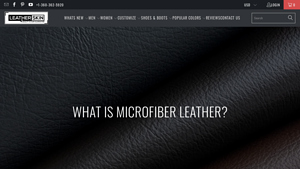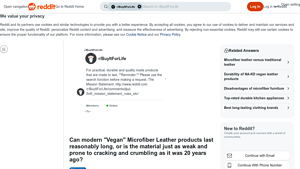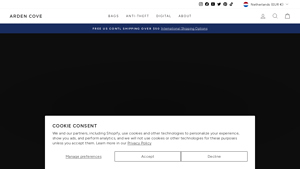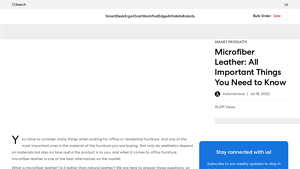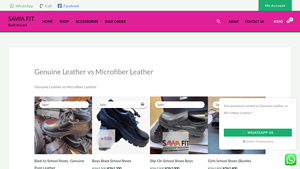Introduction: Navigating the Global Market for microfiber leather
In the competitive landscape of the global market, sourcing high-quality microfiber leather can present significant challenges for B2B buyers. As industries increasingly shift towards sustainable and cost-effective materials, microfiber leather emerges as a superior alternative to traditional leather, combining durability, versatility, and environmental benefits. This guide is designed to provide comprehensive insights into the multifaceted world of microfiber leather, covering essential aspects such as types, applications, supplier vetting processes, and cost considerations.
International buyers from regions like Africa, South America, the Middle East, and Europe—including countries such as Vietnam and Saudi Arabia—will find valuable strategies and data that empower informed purchasing decisions. By understanding the unique properties and applications of microfiber leather, businesses can leverage this material to enhance product offerings, reduce costs, and meet consumer demand for ethical and eco-friendly solutions.
Throughout this guide, we will delve into the intricacies of microfiber leather, exploring its characteristics, benefits, and the best practices for sourcing from reliable suppliers. By equipping yourself with this knowledge, you’ll be better positioned to navigate the complexities of the market, ensuring your investments yield high-quality products that resonate with your target audience.
Table Of Contents
- Top 5 Microfiber Leather Manufacturers & Suppliers List
- Introduction: Navigating the Global Market for microfiber leather
- Understanding microfiber leather Types and Variations
- Key Industrial Applications of microfiber leather
- 3 Common User Pain Points for ‘microfiber leather’ & Their Solutions
- Strategic Material Selection Guide for microfiber leather
- In-depth Look: Manufacturing Processes and Quality Assurance for microfiber leather
- Practical Sourcing Guide: A Step-by-Step Checklist for ‘microfiber leather’
- Comprehensive Cost and Pricing Analysis for microfiber leather Sourcing
- Alternatives Analysis: Comparing microfiber leather With Other Solutions
- Essential Technical Properties and Trade Terminology for microfiber leather
- Navigating Market Dynamics and Sourcing Trends in the microfiber leather Sector
- Frequently Asked Questions (FAQs) for B2B Buyers of microfiber leather
- Strategic Sourcing Conclusion and Outlook for microfiber leather
- Important Disclaimer & Terms of Use
Understanding microfiber leather Types and Variations
| Type Name | Key Distinguishing Features | Primary B2B Applications | Brief Pros & Cons for Buyers |
|---|---|---|---|
| Microfiber Leather | Superfine synthetic fibers with PU resin coating | Apparel, upholstery, automotive interiors | Pros: Durable, easy to clean, eco-friendly. Cons: Can be more expensive than PVC. |
| Micro-Suede | Soft, brushed texture resembling suede | Footwear, garments, bags | Pros: Soft feel, affordable, durable. Cons: Can attract dust and pet hair. |
| PU Coated Microfiber | Woven or nonwoven fabric base with PU coating | Fashion accessories, furniture upholstery | Pros: Cost-effective, versatile. Cons: Less breathable than standard microfiber. |
| Waterproof Microfiber | Enhanced water resistance through specialized coating | Outdoor gear, sports equipment | Pros: Excellent for wet conditions, durable. Cons: May limit breathability in extreme heat. |
| Eco-Friendly Microfiber | Made from recycled materials, non-toxic | Sustainable fashion, eco-conscious products | Pros: Environmentally friendly, safe for consumers. Cons: Potentially higher production costs. |
What Are the Characteristics of Microfiber Leather?
Microfiber leather is a highly versatile material made from ultra-fine synthetic fibers combined with a polyurethane (PU) resin layer. This structure grants it superior durability, making it a preferred choice for various applications, including apparel, upholstery, and automotive interiors. Its resistance to wear, ease of maintenance, and eco-friendliness position it as a strong alternative to genuine leather, especially for B2B buyers seeking cost-effective solutions without compromising quality.
How Does Micro-Suede Differ from Traditional Microfiber Leather?
Micro-suede is a polished variant of microfiber designed to mimic the soft texture of suede. Composed mainly of polyester and nylon, it is utilized in the production of footwear, garments, and bags. For B2B buyers, micro-suede presents an opportunity to offer products with a luxurious feel at a more affordable price point. However, its tendency to attract dust and pet hair may require additional marketing efforts to educate consumers on maintenance.
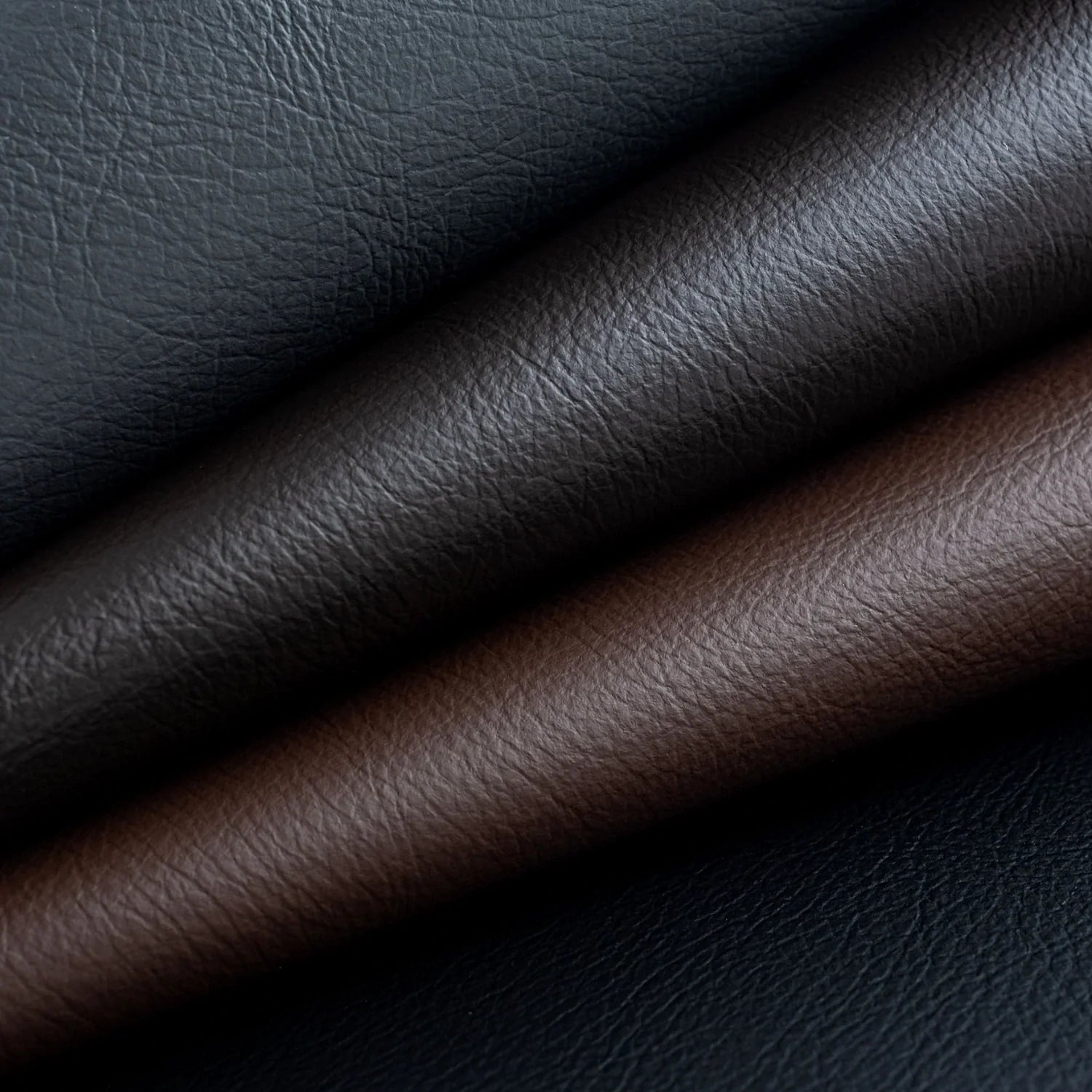
Illustrative image related to microfiber leather
What Are the Benefits of PU Coated Microfiber?
PU coated microfiber combines a woven or nonwoven fabric base with a PU resin coating, providing a balance between durability and flexibility. This type is particularly suitable for fashion accessories and furniture upholstery, where aesthetics and cost are critical. B2B buyers should consider its versatility and affordability, although they should also be aware that it may lack the breathability of standard microfiber options.
Why Choose Waterproof Microfiber for Outdoor Applications?
Waterproof microfiber is specifically designed for outdoor gear and sports equipment, featuring an enhanced coating that offers excellent water resistance. This makes it ideal for products exposed to wet conditions, such as jackets and bags. B2B buyers should evaluate the trade-off between water resistance and breathability, as increased waterproofing can sometimes hinder airflow in warmer climates.
What Makes Eco-Friendly Microfiber a Sustainable Choice?
Eco-friendly microfiber is produced from recycled materials and is free from toxic substances, making it an attractive option for sustainable fashion and eco-conscious brands. B2B buyers focusing on sustainability can leverage this material to meet growing consumer demand for environmentally responsible products. While the production costs may be higher, the potential market appeal can justify the investment.
Key Industrial Applications of microfiber leather
| Industry/Sector | Specific Application of microfiber leather | Value/Benefit for the Business | Key Sourcing Considerations for this Application |
|---|---|---|---|
| Automotive | Interior upholstery for seats and trims | Enhanced durability and ease of maintenance | Ensure compliance with automotive standards and certifications. |
| Fashion and Apparel | Jackets, bags, and shoes | Cost-effective alternative to genuine leather | Look for suppliers with sustainable practices and certifications. |
| Furniture | Upholstery for sofas and chairs | Long-lasting and aesthetically pleasing options | Verify stain resistance and colorfastness for durability. |
| Sports Equipment | Gear and accessories like gloves | Lightweight and waterproof properties | Check for abrasion resistance and flexibility for performance. |
| Home Décor | Decorative items and wall coverings | Versatile design options with eco-friendly appeal | Source from manufacturers with a focus on environmental safety. |
How is Microfiber Leather Used in the Automotive Industry?
In the automotive sector, microfiber leather is primarily utilized for interior upholstery, including seats, door panels, and dashboard coverings. Its superior durability and resistance to wear make it an ideal choice for high-traffic areas within vehicles. For international buyers, especially in regions like Africa and the Middle East, sourcing microfiber leather that meets specific automotive standards is crucial. Additionally, its easy maintenance and stain resistance provide long-term value, reducing the need for frequent replacements and cleaning.
What Are the Applications of Microfiber Leather in Fashion and Apparel?
Microfiber leather has gained significant traction in the fashion industry, particularly for producing jackets, bags, and footwear. Its cost-effectiveness compared to genuine leather allows businesses to offer stylish products without compromising quality. Buyers from South America and Europe should prioritize suppliers that demonstrate sustainable manufacturing practices, as eco-conscious consumers are increasingly influencing market trends. The material’s flexibility and comfort make it suitable for a variety of styles, from casual to high-end fashion.
How is Microfiber Leather Beneficial for Furniture Upholstery?
In furniture manufacturing, microfiber leather is extensively used for upholstery on sofas, chairs, and recliners. Its aesthetic appeal, combined with durability and easy maintenance, makes it a preferred choice for both residential and commercial applications. For B2B buyers, particularly in Europe, it is essential to ensure that the sourced microfiber leather is stain-resistant and colorfast to maintain the furniture’s appearance over time. This longevity translates into reduced costs associated with replacements and repairs.
Why is Microfiber Leather Ideal for Sports Equipment?
Microfiber leather is increasingly used in the production of sports gear and accessories, such as gloves and protective equipment. Its lightweight nature and waterproof characteristics enhance performance, making it suitable for various sports applications. Buyers from regions with diverse climates, such as the Middle East, should seek suppliers that offer materials with high abrasion resistance and flexibility. This ensures that the sports equipment can withstand rigorous use while providing comfort and safety to athletes.
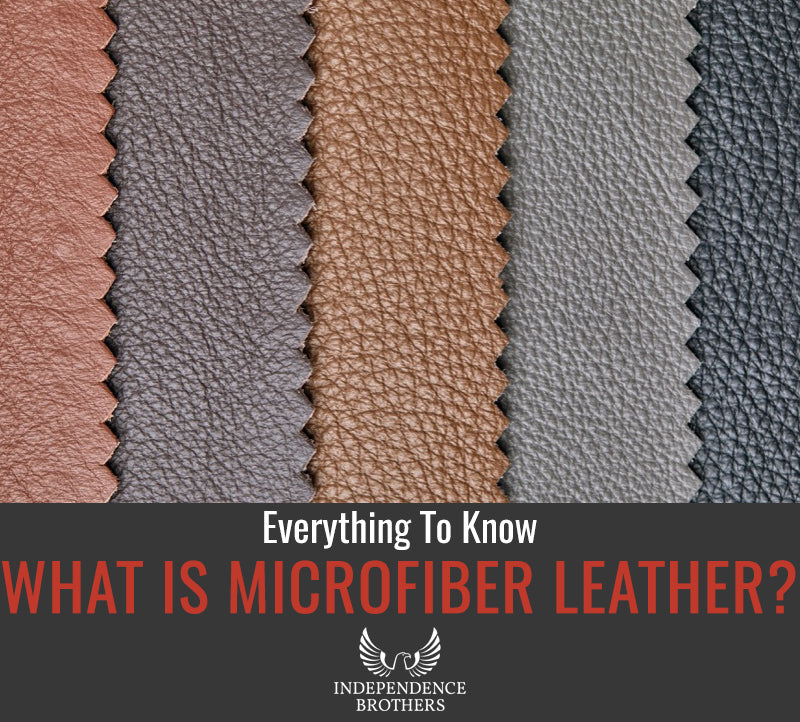
Illustrative image related to microfiber leather
How is Microfiber Leather Utilized in Home Décor?
In the home décor sector, microfiber leather is used for decorative items, wall coverings, and even furniture accents. Its versatility allows designers to create innovative and stylish solutions that appeal to eco-conscious consumers. For international buyers, sourcing from manufacturers committed to environmental safety is vital, as this aligns with the growing trend towards sustainable living. The ability to customize colors and textures further enhances its appeal, making it a popular choice for modern interior design projects.
3 Common User Pain Points for ‘microfiber leather’ & Their Solutions
Scenario 1: Sourcing Quality Microfiber Leather for Diverse Applications
The Problem: B2B buyers often encounter difficulties in sourcing high-quality microfiber leather that meets their specific needs. With numerous suppliers in the market, it can be challenging to identify a material that offers the right balance of durability, aesthetics, and cost-effectiveness. This issue is compounded by the lack of standardization in quality across different manufacturers, leading to inconsistent product performance and potential customer dissatisfaction.
The Solution: To effectively source quality microfiber leather, buyers should establish clear specifications based on their intended application—be it automotive upholstery, fashion accessories, or furniture. Collaborating with suppliers who provide detailed product descriptions, including fiber composition, thickness, and durability ratings, is crucial. Conducting small-scale trials or requesting samples from multiple suppliers can help assess quality before making larger purchases. Additionally, buyers should prioritize suppliers with positive reviews and a proven track record in the industry, ensuring that they can meet the expected quality standards consistently.
Scenario 2: Managing Maintenance Challenges with Microfiber Leather Products
The Problem: One common pain point for B2B buyers is the ongoing maintenance required for microfiber leather products. While microfiber leather is known for its durability and resistance to staining, improper care can lead to a buildup of dust and debris, which can diminish the material’s appearance over time. Buyers may find themselves facing increased costs and labor associated with maintaining the aesthetic and functional quality of their products.
The Solution: To mitigate maintenance challenges, B2B buyers should implement a comprehensive care plan for microfiber leather products. This plan should include regular cleaning schedules using appropriate cleaning agents designed for synthetic materials. Educating staff on proper cleaning techniques—such as using soft microfiber cloths and avoiding harsh chemicals—can prevent damage and prolong the lifespan of the material. Furthermore, offering customers clear maintenance guidelines with every purchase will enhance user experience and reduce return rates, ultimately leading to greater customer satisfaction.
Scenario 3: Overcoming Environmental Concerns Associated with Microfiber Leather
The Problem: As sustainability becomes a critical focus in the global market, B2B buyers often face scrutiny regarding the environmental impact of their materials. While microfiber leather is marketed as a vegan alternative to natural leather, concerns about its production processes and potential for microplastic pollution can deter environmentally conscious clients.
The Solution: To address these environmental concerns, buyers should seek out microfiber leather manufacturers that prioritize eco-friendly practices. This includes sourcing materials from suppliers that use recycled fibers or sustainable production methods. Buyers can also request certifications or documentation that demonstrate the environmental impact of the materials being used. Additionally, educating customers about the benefits of microfiber leather, such as its longevity and lower resource consumption compared to traditional leather, can help position it as a responsible choice. By prioritizing sustainability in their sourcing strategy, B2B buyers can meet market demands while enhancing their brand reputation.
Strategic Material Selection Guide for microfiber leather
What Are the Key Materials Used in Microfiber Leather Production?
Microfiber leather is primarily composed of a blend of synthetic materials, each offering distinct properties that affect its performance, durability, and suitability for various applications. Below, we analyze four common materials used in the production of microfiber leather, focusing on their key properties, advantages, disadvantages, and considerations for international B2B buyers.
1. Polyurethane (PU) Resin
Key Properties: Polyurethane resin is known for its excellent flexibility and water resistance. It can withstand a range of temperatures, making it suitable for various climates. PU is also resistant to abrasion and has a high degree of elasticity.
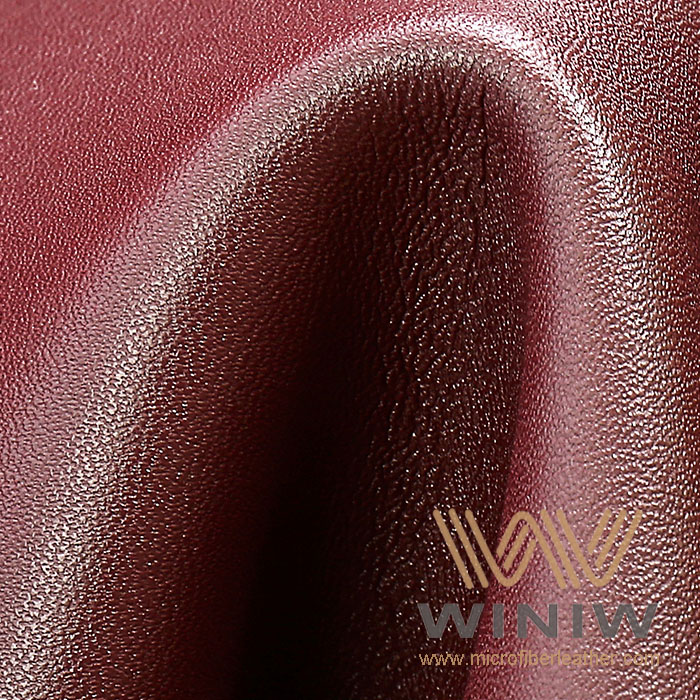
Illustrative image related to microfiber leather
Pros & Cons: The main advantage of PU resin is its durability and resistance to wear and tear, which extends the lifespan of products made from microfiber leather. However, the manufacturing process can be complex, leading to higher production costs. Additionally, while PU is generally more affordable than genuine leather, it can be more expensive than other synthetic options like PVC.
Impact on Application: PU resin is particularly compatible with applications requiring high durability, such as automotive interiors and high-end fashion items. Its water resistance makes it ideal for products exposed to moisture.
Considerations for International Buyers: Buyers should ensure compliance with international standards such as ASTM and DIN, particularly regarding chemical safety and environmental impact. Regions like Europe have stringent regulations on the use of certain chemicals in manufacturing.
2. Polyester Fibers
Key Properties: Polyester fibers are lightweight, strong, and resistant to shrinking and stretching. They also exhibit good resistance to environmental factors like UV light and moisture.
Pros & Cons: The lightweight nature of polyester makes it an excellent choice for applications where weight is a concern, such as clothing and upholstery. However, polyester can be less breathable compared to other materials, which may impact comfort in certain applications.
Impact on Application: Polyester is often used in clothing and upholstery where durability and ease of maintenance are priorities. Its resistance to fading makes it suitable for outdoor applications.
Considerations for International Buyers: Buyers in regions like South America and Africa should consider the local climate when selecting polyester-based microfiber leather, as breathability may be a significant factor for comfort.
3. Nylon Fibers
Key Properties: Nylon fibers are known for their exceptional strength and elasticity. They also have a high resistance to abrasion and chemicals, making them suitable for demanding applications.
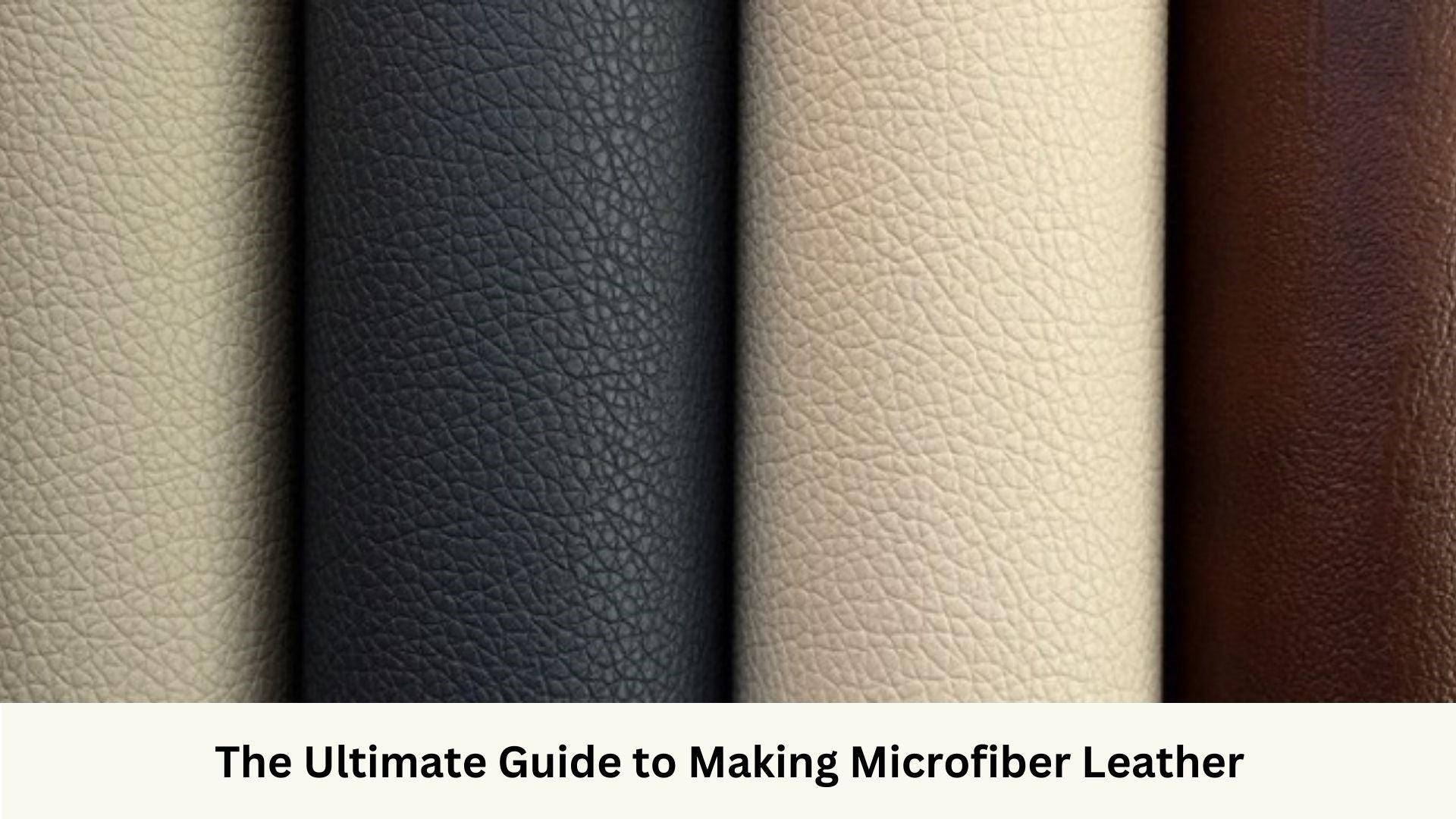
Illustrative image related to microfiber leather
Pros & Cons: The main advantage of nylon is its durability and resilience, which allows for long-lasting products. However, nylon can be more expensive than other synthetic fibers, and its production process can have a higher environmental impact.
Impact on Application: Nylon is particularly effective in applications requiring high durability, such as automotive and industrial uses. Its chemical resistance makes it suitable for environments where exposure to harsh substances is likely.
Considerations for International Buyers: B2B buyers should be mindful of regional regulations regarding the environmental impact of nylon production, especially in Europe, where sustainability is a growing concern.
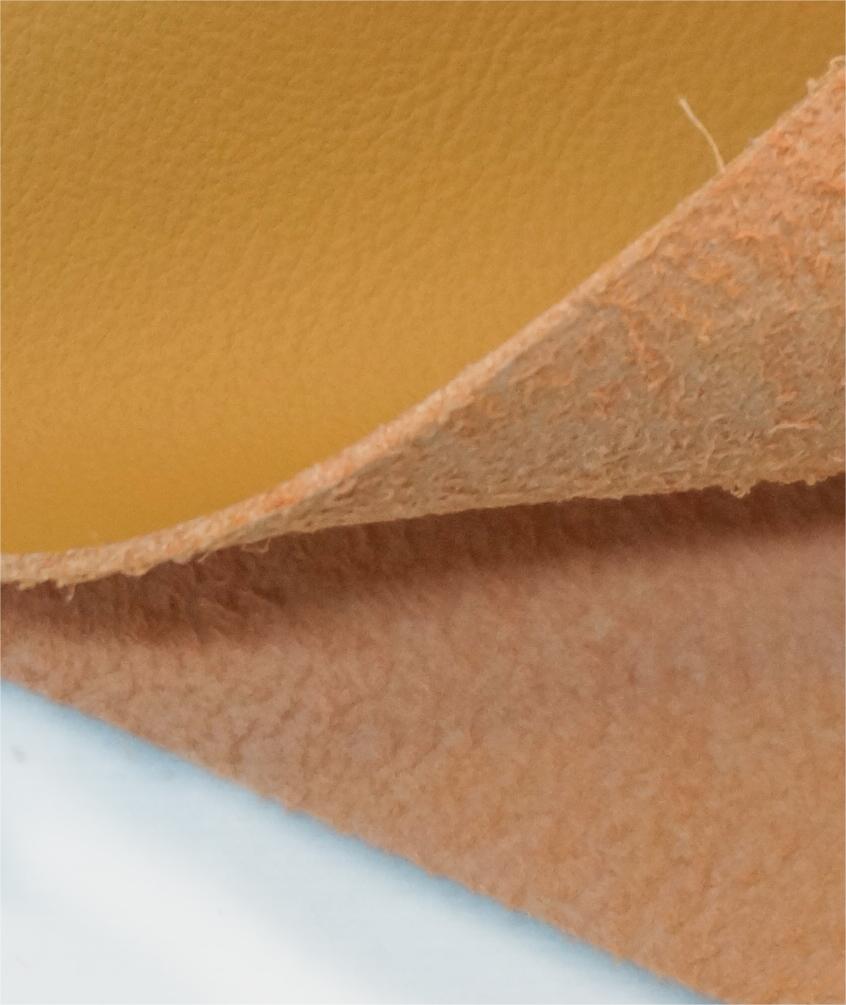
Illustrative image related to microfiber leather
4. Microfiber Suede
Key Properties: Microfiber suede is made from a blend of polyester and nylon, designed to mimic the texture of natural suede. It is soft, durable, and easy to clean.
Pros & Cons: The primary advantage of microfiber suede is its aesthetic appeal, offering a luxurious look while being more affordable than genuine suede. However, it may not be as durable as other synthetic options, particularly in high-wear applications.
Impact on Application: Microfiber suede is commonly used in fashion items, upholstery, and accessories where a soft texture is desired. Its easy maintenance makes it popular for consumer goods.

Illustrative image related to microfiber leather
Considerations for International Buyers: Buyers should consider the target market’s preferences for texture and appearance, especially in regions where luxury and aesthetics are highly valued, such as Europe and the Middle East.
Summary Table of Microfiber Leather Materials
| Material | Typical Use Case for microfiber leather | Key Advantage | Key Disadvantage/Limitation | Relative Cost (Low/Med/High) |
|---|---|---|---|---|
| Polyurethane (PU) | Automotive interiors, high-end fashion | Durable and water-resistant | Higher production cost | Medium |
| Polyester Fibers | Clothing, upholstery | Lightweight and UV resistant | Less breathable | Low |
| Nylon Fibers | Automotive, industrial applications | Exceptional strength and durability | Higher environmental impact | High |
| Microfiber Suede | Fashion items, upholstery | Luxurious look at a lower cost | Less durable in high-wear areas | Medium |
This strategic material selection guide aims to equip international B2B buyers with the necessary insights to make informed decisions when sourcing microfiber leather products, considering both performance and compliance with regional standards.
In-depth Look: Manufacturing Processes and Quality Assurance for microfiber leather
What Are the Key Stages in the Manufacturing Process of Microfiber Leather?
The manufacturing of microfiber leather is a multi-stage process that combines innovative techniques to produce a high-quality synthetic alternative to natural leather. Understanding these stages is crucial for B2B buyers seeking reliable suppliers.
Material Preparation: How Is Microfiber Leather Made from Raw Materials?
The initial stage involves sourcing high-quality materials, primarily consisting of ultra-fine synthetic fibers, typically polyester or nylon. These fibers are processed to create a nonwoven fabric. A significant step in this phase is the integration of a polyurethane (PU) resin, which enhances the material’s durability and functionality. The resin is mixed with crushed cowhide leather scraps to form a pulp, which adds to the texture and quality of the final product.
Forming: What Techniques Are Used to Create Microfiber Leather?
Once the materials are prepared, the forming process begins. This involves mechanical calendering, where the pulp is rolled into sheets under controlled pressure and temperature. The sheets are then coated with a PU film, which can be applied through either wet or dry processes. This coating not only adds a protective layer but also contributes to the leather’s waterproof and stain-resistant properties. The result is a uniform, smooth surface that mimics the appearance of natural leather.
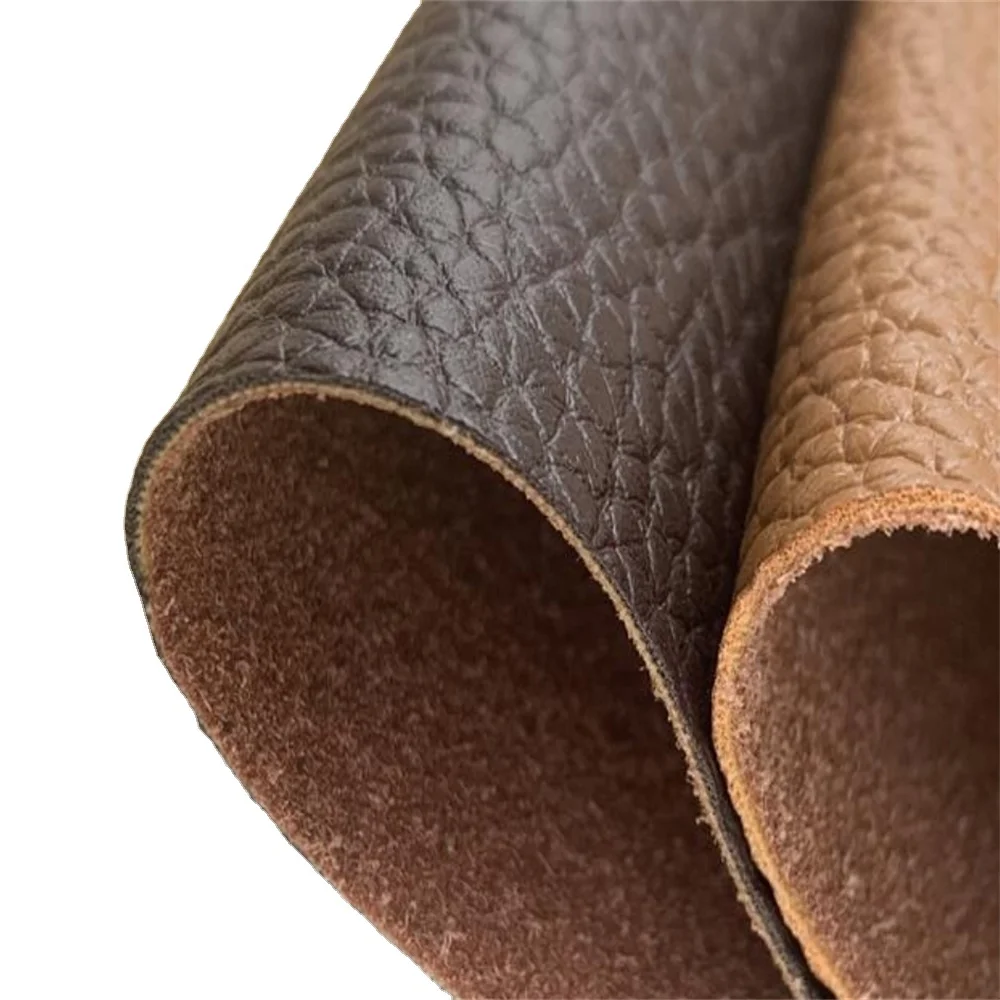
Illustrative image related to microfiber leather
Assembly: How Are Microfiber Leather Products Constructed?
In the assembly phase, the prepared microfiber leather sheets are cut into desired shapes and sizes for various products such as garments, accessories, and automotive interiors. This stage may involve sewing, bonding, or other joining techniques. The pliability of microfiber leather makes it particularly easy to work with, allowing manufacturers to create intricate designs and patterns that appeal to a wide range of consumer preferences.
Finishing: What Final Touches Are Added to Microfiber Leather?
The finishing stage involves several treatments that enhance the leather’s appearance and performance. This may include dyeing, embossing, and applying additional protective coatings. These processes not only improve aesthetic qualities but also ensure that the microfiber leather meets specific functional requirements, such as UV resistance and enhanced durability.
What Quality Assurance Measures Are Essential for Microfiber Leather?
Quality assurance is a critical component of the manufacturing process for microfiber leather. Ensuring that products meet international standards is essential for maintaining competitiveness in the global market.
Which International Standards Should B2B Buyers Look for in Microfiber Leather?
Microfiber leather manufacturers often adhere to various international quality standards to ensure product reliability. The ISO 9001 certification is a foundational standard that focuses on quality management systems, ensuring consistent product quality and customer satisfaction. Additionally, industry-specific certifications such as CE (Conformité Européenne) and API (American Petroleum Institute) may apply, especially for products used in specialized applications like automotive interiors.

Illustrative image related to microfiber leather
What Are the Key Quality Control Checkpoints in Microfiber Leather Production?
Quality control (QC) involves multiple checkpoints throughout the manufacturing process:
-
Incoming Quality Control (IQC): This initial stage involves inspecting raw materials for defects or inconsistencies before production begins. Ensuring high-quality inputs is critical to achieving a superior final product.
-
In-Process Quality Control (IPQC): During manufacturing, ongoing inspections are conducted to monitor the production process. This includes checking the consistency of the coating application and the integrity of the seams.
-
Final Quality Control (FQC): After production, a thorough inspection is performed on the finished products. This final check assesses the aesthetic qualities and functional performance, such as durability and waterproofing.
What Testing Methods Are Commonly Used to Ensure Microfiber Leather Quality?
To verify the quality of microfiber leather, several testing methods are employed. These may include:
-
Abrasion Resistance Testing: This test evaluates the durability of the surface under repeated friction, ensuring that the material can withstand everyday use.
-
Water Resistance Testing: Assessing the material’s ability to repel water is crucial, especially for applications in furniture and automotive interiors.
-
Color Fastness Testing: This ensures that the dyes used in the microfiber leather maintain their vibrancy and do not fade over time, even under exposure to sunlight.
How Can B2B Buyers Verify Supplier Quality Control Practices?
For international buyers, especially those in Africa, South America, the Middle East, and Europe, verifying a supplier’s QC practices is essential to mitigate risks associated with product quality. Here are actionable strategies:
-
Supplier Audits: Conducting on-site audits allows buyers to assess the manufacturing processes and QC practices firsthand. This can help identify potential issues before placing large orders.
-
Quality Reports: Requesting detailed QC reports from suppliers can provide insights into their testing methods and compliance with international standards. These reports should include data on previous inspections and any corrective actions taken.
-
Third-Party Inspections: Engaging independent third-party inspection services can provide an unbiased assessment of product quality. This is particularly valuable for buyers who may not have the resources for direct inspections.
What Are the Quality Certification Nuances for International B2B Buyers?
When dealing with international suppliers, it’s important to understand that different regions may have specific quality certification requirements. For instance:

Illustrative image related to microfiber leather
-
European Standards: Products sold in Europe must often comply with CE marking, which indicates conformity with health, safety, and environmental protection standards.
-
Middle Eastern and African Markets: Buyers in these regions may need to consider local certifications that ensure products meet specific regulatory requirements.
-
Documentation Requirements: Ensure that suppliers provide all necessary documentation, including certificates of conformity and test reports, to facilitate smooth customs clearance and regulatory compliance.
By understanding the manufacturing processes and quality assurance measures associated with microfiber leather, B2B buyers can make informed decisions, ensuring that they partner with reliable suppliers who deliver high-quality products that meet their specific needs.
Practical Sourcing Guide: A Step-by-Step Checklist for ‘microfiber leather’
Introduction
Sourcing microfiber leather can be a rewarding endeavor for B2B buyers looking for a cost-effective, durable alternative to natural leather. This guide provides a structured checklist to streamline your procurement process, ensuring you select high-quality materials that meet your specifications while fostering strong supplier relationships.
Step 1: Define Your Technical Specifications
Before initiating the sourcing process, clearly outline the technical specifications for the microfiber leather you need. Consider factors such as thickness, texture, color, and finish.
- Durability Requirements: Specify the level of wear resistance you expect based on the intended use (e.g., upholstery, garments, automotive).
- Environmental Standards: Determine if you need the material to be eco-friendly or meet specific certifications.
Step 2: Research Potential Suppliers
Conduct thorough research to identify potential suppliers who specialize in microfiber leather.
- Industry Reputation: Look for suppliers with a proven track record in your target markets, such as Africa, South America, or Europe.
- Product Range: Ensure the suppliers offer a variety of microfiber leather options that can meet diverse customer demands.
Step 3: Evaluate Supplier Certifications
Before proceeding with any supplier, verify their certifications and compliance with international standards.
- Quality Assurance: Certifications like ISO 9001 can indicate a commitment to quality management practices.
- Environmental Compliance: Check for certifications such as OEKO-TEX or REACH, which demonstrate adherence to environmental and safety standards.
Step 4: Request Samples for Testing
Always request samples of the microfiber leather before making a bulk purchase. This step is critical for assessing the quality and suitability of the material.
- Physical Evaluation: Check for consistency in texture, color, and flexibility.
- Durability Testing: Conduct tests for abrasion resistance, water repellency, and stain resistance to ensure it meets your quality expectations.
Step 5: Negotiate Pricing and Terms
Once you have selected a potential supplier, engage in negotiations to establish favorable pricing and terms.
- Bulk Purchase Discounts: Inquire about pricing structures for larger orders to maximize cost savings.
- Payment Terms: Discuss payment terms that align with your cash flow needs, considering options such as deposits or extended payment periods.
Step 6: Establish Clear Communication Channels
Effective communication is vital for a successful sourcing process.
- Regular Updates: Set expectations for communication frequency and preferred methods (email, phone, etc.).
- Point of Contact: Designate a specific person from both sides to handle inquiries and resolve issues promptly.
Step 7: Finalize the Contract
Before placing an order, ensure that all agreements are documented in a formal contract.
- Terms and Conditions: Clearly outline payment terms, delivery timelines, and return policies to avoid misunderstandings.
- Legal Compliance: Consult legal expertise to ensure the contract complies with international trade laws and regulations relevant to your regions of operation.
By following this checklist, B2B buyers can navigate the complexities of sourcing microfiber leather effectively, ensuring they secure high-quality materials that meet their business needs.
Comprehensive Cost and Pricing Analysis for microfiber leather Sourcing
What Are the Key Cost Components in Microfiber Leather Sourcing?
Understanding the cost structure of microfiber leather is essential for international B2B buyers looking to optimize their sourcing strategies. The primary cost components include:
-
Materials: The base materials for microfiber leather typically include synthetic fibers and polyurethane (PU) resin. The quality and type of these materials significantly influence the overall cost. High-quality fibers and resins may come at a premium but can enhance durability and performance.
-
Labor: Labor costs vary by region and can be a significant factor in the overall pricing. Countries with lower labor costs may offer competitive pricing, but this can sometimes correlate with lower quality. Evaluating the skill level of the workforce involved in production is crucial.
-
Manufacturing Overhead: This includes costs associated with running the manufacturing facility, such as utilities, rent, and equipment maintenance. Efficient production processes can help mitigate these costs, impacting the final price.
-
Tooling: Custom tooling for specific designs or specifications can add to the initial investment. Buyers should consider whether the tooling costs can be amortized over large production runs to reduce per-unit costs.
-
Quality Control (QC): Implementing a robust QC process is vital for ensuring product consistency and compliance with international standards. Higher QC standards may increase costs but can prevent costly returns and enhance customer satisfaction.
-
Logistics: Shipping and handling costs are crucial, particularly for international transactions. Factors such as distance, shipping method, and Incoterms can dramatically affect the total cost.
-
Margin: Suppliers typically add a profit margin on top of their costs. Understanding typical margins in the microfiber leather industry can help buyers negotiate better deals.
How Do Price Influencers Affect Microfiber Leather Costs?
Several factors influence the pricing of microfiber leather, making it essential for buyers to be aware of these variables:
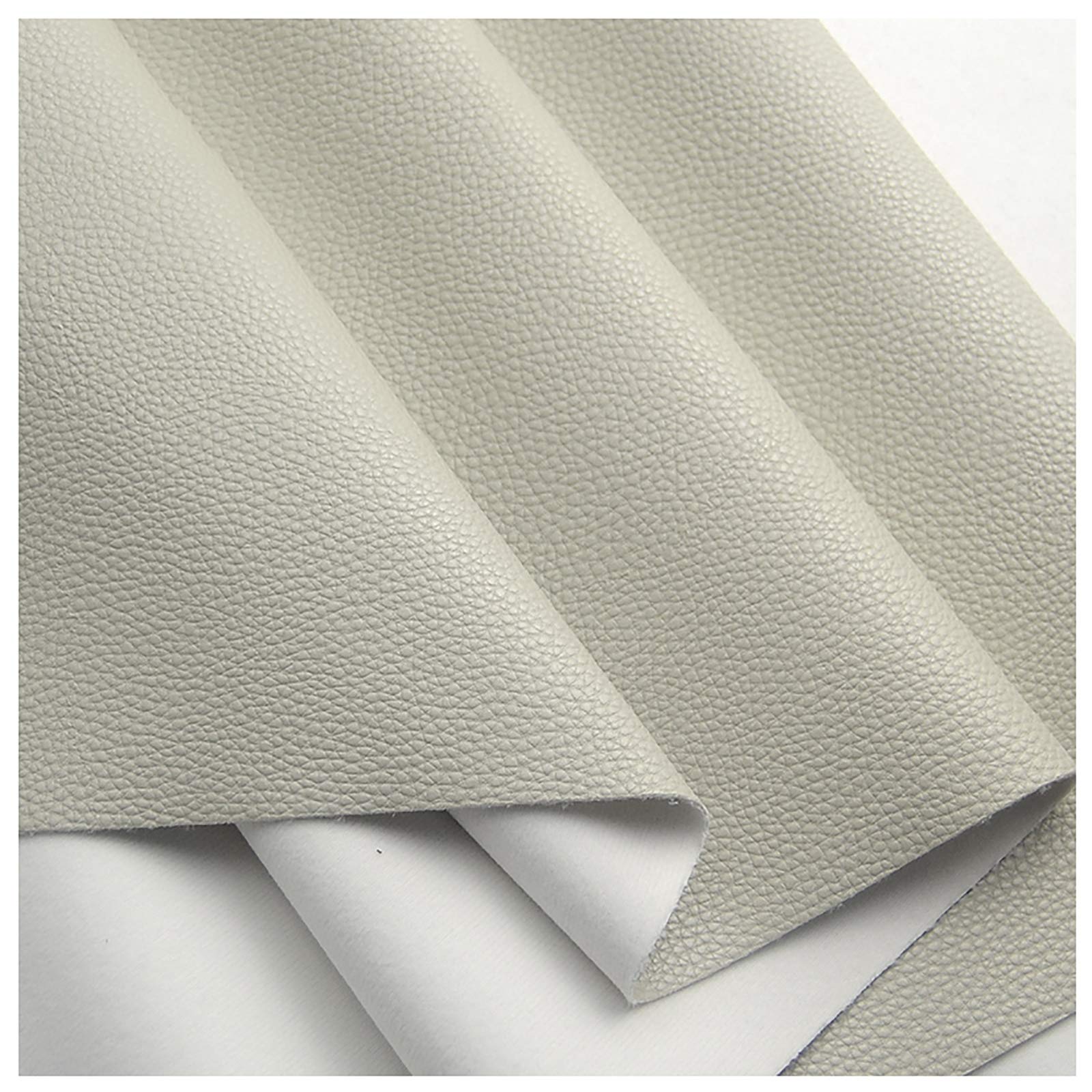
Illustrative image related to microfiber leather
-
Volume/MOQ (Minimum Order Quantity): Suppliers often provide better pricing for larger orders. Buyers should evaluate their production needs to leverage volume discounts effectively.
-
Specifications and Customization: Custom designs or specific performance attributes (like water resistance or breathability) can lead to higher costs. Buyers should clearly define their requirements to avoid unexpected price hikes.
-
Material Quality and Certifications: Premium materials and certifications (like eco-friendly or safety standards) can increase costs. However, these factors may also enhance the product’s marketability.
-
Supplier Factors: The reputation and reliability of the supplier can influence pricing. Established suppliers may charge more due to their quality assurance processes and reputation in the market.
-
Incoterms: Understanding the shipping terms and responsibilities can help buyers manage logistics costs. Different Incoterms can shift the financial burden of shipping and customs duties, affecting overall pricing.
What Buyer Tips Can Enhance Cost-Efficiency When Sourcing Microfiber Leather?
For B2B buyers, especially those from diverse regions like Africa, South America, the Middle East, and Europe, several strategies can enhance cost-efficiency:
-
Negotiation: Engage suppliers in discussions about pricing, especially if you can offer larger order quantities or long-term contracts. Building a strong relationship can also lead to better terms.
-
Total Cost of Ownership (TCO): Evaluate the total cost of sourcing microfiber leather, including purchase price, shipping, customs, and potential returns. This comprehensive view can help buyers make more informed decisions.
-
Pricing Nuances for International Buyers: Currency fluctuations and regional economic conditions can affect pricing. Buyers should consider these factors when negotiating and planning purchases.
-
Research and Due Diligence: Conduct thorough research on potential suppliers. Check references, verify certifications, and request samples to ensure product quality aligns with your requirements.
Conclusion
Navigating the cost structure and pricing dynamics of microfiber leather sourcing requires careful consideration of various components and influencing factors. By understanding these elements and implementing strategic purchasing practices, B2B buyers can optimize their sourcing processes, ensuring they receive high-quality products at competitive prices. Note that prices may vary based on market conditions, supplier negotiations, and specific buyer requirements, so it is advisable to seek multiple quotes for a more accurate cost assessment.
Alternatives Analysis: Comparing microfiber leather With Other Solutions
Understanding Alternatives to Microfiber Leather
In the competitive landscape of materials used for manufacturing, choosing the right option can significantly impact product quality, cost, and sustainability. Microfiber leather has emerged as a popular synthetic alternative to natural leather due to its durability, cost-effectiveness, and environmental friendliness. However, there are other alternatives worth considering, each with unique characteristics that might better suit specific business needs. This analysis compares microfiber leather with PVC leather and PU leather, two widely used synthetic materials.
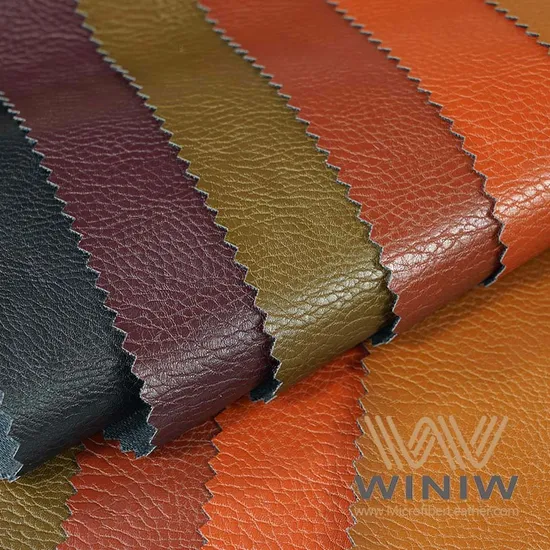
Illustrative image related to microfiber leather
| Comparison Aspect | Microfiber Leather | PVC Leather | PU Leather |
|---|---|---|---|
| Performance | High durability, stain-resistant, and flexible | Durable but less flexible, retains shape | Good abrasion resistance, less durable than microfiber |
| Cost | Moderate pricing | Generally lower cost | Slightly higher than PVC |
| Ease of Implementation | Easy to sew and work with | Requires more complex handling | Moderate complexity |
| Maintenance | Easy to clean, resistant to staining | Moderate, can be wiped clean | Requires regular care |
| Best Use Case | Fashion, automotive interiors, furniture | Budget-friendly applications, casual wear | Fashion, upholstery, accessories |
What Are the Benefits and Drawbacks of PVC Leather?
PVC leather, or polyvinyl chloride leather, is a synthetic material made from plastic. It is often favored for its affordability and versatility. However, while it is durable, PVC leather lacks the flexibility and breathability of microfiber leather, making it less suitable for high-end fashion or automotive applications. Its rigid nature can lead to discomfort in clothing and upholstery, especially in warm climates. Furthermore, PVC is less eco-friendly, as it involves more complex manufacturing processes and is not biodegradable.
How Does PU Leather Compare to Microfiber Leather?
PU leather, or polyurethane leather, is another synthetic alternative that is more breathable than PVC. It mimics the texture of real leather and is often used in fashion and accessories. While PU leather offers good abrasion resistance, it tends to be less durable than microfiber leather, which excels in longevity and resistance to wear and tear. PU leather can also be more expensive than both microfiber and PVC options, making it a less economical choice for bulk manufacturing. However, it offers a more luxurious appearance that some brands may prefer for high-end products.
Conclusion: How to Choose the Right Leather Alternative?
When selecting the right leather alternative for your business, consider factors such as your target market, budget, and the specific application of the material. Microfiber leather stands out for its combination of durability, affordability, and versatility, making it an excellent choice for various industries, including fashion and automotive. Meanwhile, if cost is a primary concern, PVC leather could be a viable option for more casual products. Conversely, if your brand focuses on premium offerings, PU leather may provide the aesthetic appeal you need, despite its higher price point and lower durability. By carefully evaluating these factors, B2B buyers can make informed decisions that align with their strategic goals and customer expectations.
Essential Technical Properties and Trade Terminology for microfiber leather
What Are the Key Technical Properties of Microfiber Leather?
Microfiber leather, known for its durability and versatility, is increasingly favored in various industries, including fashion, automotive, and furniture. Understanding its technical properties is crucial for B2B buyers to make informed purchasing decisions.
1. Material Composition
Microfiber leather is primarily composed of a blend of ultra-fine synthetic fibers, typically polyester and polyamide, combined with a polyurethane (PU) coating. This unique composition provides a balance of flexibility, strength, and water resistance, making it suitable for high-wear applications. For buyers, knowing the material composition helps assess the suitability for specific projects, ensuring quality and performance standards are met.
2. Durability Rating
Durability is often quantified by testing for abrasion resistance, tear strength, and tensile strength. Microfiber leather generally exhibits superior durability compared to both natural leather and other synthetic alternatives. A higher durability rating indicates a longer lifespan and reduced replacement costs, which is critical for businesses focused on return on investment (ROI).
3. Breathability and Moisture Management
Breathability is a vital property, especially in applications like clothing and automotive interiors where comfort is paramount. Microfiber leather’s structure allows for air circulation while still providing a water-resistant surface. Understanding breathability metrics can help B2B buyers select appropriate materials for climates and usage scenarios, enhancing customer satisfaction.
4. Eco-Friendliness
Many microfiber leathers are marketed as environmentally friendly options, being free from toxic chemicals and animal products. Certifications such as OEKO-TEX® Standard 100 may be relevant for buyers looking to align their products with sustainable practices. This property not only appeals to eco-conscious consumers but can also influence regulatory compliance in various markets.
5. Color Fastness
Color fastness measures how well a material retains its color when exposed to light, washing, or rubbing. Microfiber leather typically boasts high color fastness, which is essential for maintaining aesthetic appeal over time. For manufacturers, this property reduces the risk of customer complaints regarding fading or discoloration, thereby protecting brand reputation.
6. Weight and Thickness
Weight and thickness are crucial parameters that affect the handling and application of microfiber leather. Thicker materials may offer enhanced durability, while lighter options can provide better comfort in garments. Understanding these specifications allows B2B buyers to select materials that align with their product design and functionality requirements.
What Are the Common Trade Terms Associated with Microfiber Leather?
Navigating the world of microfiber leather procurement involves understanding key industry jargon that can impact transactions and partnerships.
1. OEM (Original Equipment Manufacturer)
OEM refers to companies that manufacture products based on specifications provided by another company. In the microfiber leather industry, OEM partnerships allow businesses to create custom products tailored to their brand. Buyers should consider OEM capabilities when seeking unique designs or features.
2. MOQ (Minimum Order Quantity)
MOQ is the smallest amount of product a supplier is willing to sell. Understanding MOQ is vital for buyers to manage inventory and cash flow effectively. Suppliers may set MOQs based on production costs, which can vary significantly based on material types and manufacturing processes.
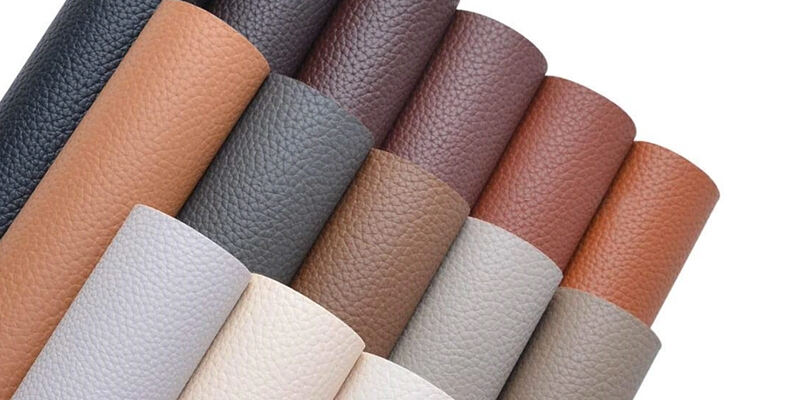
Illustrative image related to microfiber leather
3. RFQ (Request for Quotation)
An RFQ is a document sent by buyers to suppliers asking for pricing and terms on specific products. In the context of microfiber leather, an RFQ helps buyers compare costs, specifications, and lead times from different suppliers, facilitating informed purchasing decisions.
4. Incoterms (International Commercial Terms)
Incoterms are standardized trade terms used globally to define the responsibilities of buyers and sellers in international transactions. Familiarity with Incoterms is crucial for B2B buyers engaging in international sourcing of microfiber leather, as they determine shipping responsibilities, risk, and costs.
5. Lead Time
Lead time refers to the time taken from placing an order to receiving the products. In the context of microfiber leather, understanding lead times is essential for production scheduling and inventory management. Buyers should clarify lead times during negotiations to ensure timely delivery aligned with their project timelines.
By grasping these technical properties and trade terms, B2B buyers can navigate the microfiber leather market more effectively, ensuring they make strategic purchasing decisions that support their business objectives.
Navigating Market Dynamics and Sourcing Trends in the microfiber leather Sector
What Are the Current Market Dynamics and Key Trends in the Microfiber Leather Sector?
The global microfiber leather market is experiencing robust growth, driven by increasing demand for sustainable and cost-effective alternatives to natural leather. B2B buyers from regions such as Africa, South America, the Middle East, and Europe are increasingly recognizing the versatility of microfiber leather in various applications, including automotive interiors, fashion, and upholstery. Key trends include the rise of eco-conscious consumerism and the incorporation of advanced technologies in manufacturing processes. Innovations such as water-based polyurethane coatings are enhancing the durability and performance of microfiber leather, making it a preferred choice over PVC and traditional synthetic leathers.
Additionally, the digital transformation of supply chains is reshaping sourcing dynamics. B2B buyers are leveraging e-commerce platforms and data analytics to identify reliable suppliers and streamline procurement processes. As manufacturers focus on reducing lead times and improving product quality, collaborations with tech companies for automation and smart manufacturing are becoming increasingly common. This trend is particularly beneficial for international buyers looking to optimize their sourcing strategies and mitigate risks associated with supply chain disruptions.
How Is Sustainability Shaping the Sourcing of Microfiber Leather?
Sustainability is a pivotal factor influencing sourcing decisions in the microfiber leather sector. As environmental regulations tighten globally, B2B buyers are prioritizing suppliers who adhere to sustainable practices. The production of microfiber leather typically involves less water and energy compared to traditional leather tanning processes, making it an attractive option for environmentally conscious businesses. Furthermore, the material is inherently resistant to stains and wear, extending the lifecycle of products made from it and reducing waste.
The importance of ethical sourcing cannot be overstated; buyers are increasingly seeking suppliers who can provide transparency in their supply chains. Certifications such as OEKO-TEX® and Global Recycled Standard (GRS) are becoming essential for validating the environmental and social credentials of microfiber leather products. By choosing certified materials, businesses can enhance their brand reputation and appeal to a growing segment of consumers who value sustainability. For international buyers, sourcing microfiber leather from suppliers with robust sustainability practices not only aligns with global trends but also positions them competitively in their respective markets.
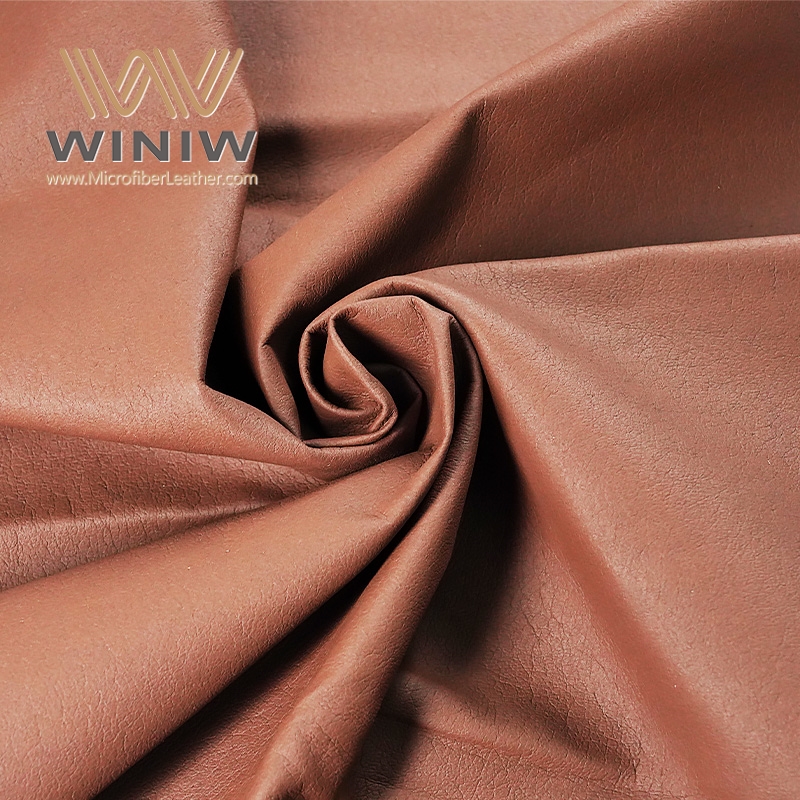
Illustrative image related to microfiber leather
What Is the Evolution of Microfiber Leather in the B2B Landscape?
Microfiber leather has evolved significantly since its introduction in the late 20th century. Initially developed as a cost-effective alternative to natural leather, its manufacturing process has undergone substantial refinement. Today, microfiber leather is produced using advanced technologies that enhance its durability, breathability, and aesthetic appeal. This evolution has positioned microfiber leather as a versatile material suitable for a wide range of applications, from high-end fashion to functional automotive interiors.
The increased focus on sustainability and ethical sourcing has further accelerated its adoption in the B2B landscape. As industries shift towards greener alternatives, microfiber leather’s profile continues to rise, offering businesses a compelling option that meets both consumer demand and regulatory standards. Consequently, international B2B buyers are finding microfiber leather not only a practical choice but also a strategic asset in navigating the complexities of today’s market dynamics.
Frequently Asked Questions (FAQs) for B2B Buyers of microfiber leather
-
How do I ensure the quality of microfiber leather from suppliers?
To guarantee the quality of microfiber leather, conduct a thorough vetting process of potential suppliers. Request samples to evaluate the texture, durability, and overall appearance. Inquire about their manufacturing processes and certifications, such as ISO quality management standards. Additionally, consider visiting the manufacturing facility or engaging third-party inspection services to verify the production methods and quality control measures in place. -
What is the best type of microfiber leather for automotive applications?
For automotive applications, look for microfiber leather specifically designed for durability and resistance to wear. High-quality microfiber leather with a polyurethane (PU) coating offers excellent abrasion resistance, breathability, and water repellency, making it ideal for car interiors. Opt for products that are tested for color fastness and easy maintenance, as these features are crucial for long-term performance in vehicles exposed to varying environmental conditions. -
What are the typical minimum order quantities (MOQs) for microfiber leather?
Minimum order quantities for microfiber leather can vary significantly between suppliers, typically ranging from 500 to 2,000 square meters. Factors influencing MOQs include the supplier’s production capacity, the specific type of microfiber leather, and customization requirements. When negotiating, discuss your needs clearly to explore options for lower MOQs or consolidated shipments to optimize costs. -
What payment terms should I expect when sourcing microfiber leather internationally?
Payment terms for international transactions usually include options like a letter of credit (LC), advance payment, or payment against documents. Many suppliers may require a deposit of 30-50% upfront, with the balance due before shipment. It’s crucial to negotiate favorable terms that align with your cash flow while ensuring that you have protection against potential risks associated with international trade. -
How can I customize microfiber leather products for my brand?
Customizing microfiber leather products involves selecting specific colors, textures, and finishes that align with your brand identity. Many suppliers offer options for embossing, printing, or dyeing to create unique designs. Discuss your requirements early in the sourcing process and ensure that the supplier has the capability to produce custom items at scale without compromising quality or lead times. -
What logistics considerations should I keep in mind when importing microfiber leather?
When importing microfiber leather, consider factors such as shipping methods, lead times, and customs regulations. Choose reliable freight forwarders familiar with the textile industry to ensure efficient transport. Be aware of import tariffs and duties specific to your country, and ensure that all necessary documentation, including certificates of origin and compliance, is prepared to avoid delays at customs. -
What are the environmental impacts of microfiber leather production?
Microfiber leather is often considered a more sustainable alternative to genuine leather due to its animal-free nature. However, the production process can involve synthetic materials that may raise environmental concerns. When sourcing, inquire about the supplier’s sustainability practices, including waste management and the use of eco-friendly chemicals in manufacturing. Look for certifications that indicate environmentally responsible production methods. -
How should I handle quality assurance for microfiber leather purchases?
Implement a robust quality assurance process by defining clear specifications and standards before placing an order. Establish communication with your supplier to set expectations for quality checks throughout production. Consider arranging pre-shipment inspections by third-party quality control services to ensure that the final product meets your standards. Regular feedback loops with the supplier can also facilitate continuous improvement in quality.
Top 5 Microfiber Leather Manufacturers & Suppliers List
1. Leather Skin Shop – Microfiber Leather
Domain: leatherskinshop.com
Registered: 2014 (11 years)
Introduction: Microfiber leather, also known as Microfiber Polyurethane leather, is a nonwoven synthetic material made from short superfine fibers and a PU resin layer. It is a durable and cost-effective alternative to natural leather, characterized by its resistance to wear and tear, breathability, age resistance, flexibility, waterproof properties, stain resistance, and environmental friendliness. It is easy …
2. Vegan Microfiber Leather – Durability Concerns
Domain: reddit.com
Registered: 2005 (20 years)
Introduction: Modern “Vegan” Microfiber Leather products are being questioned for their durability compared to traditional leather. The discussion highlights concerns about whether these materials are still weak and prone to cracking and crumbling, similar to older versions from 20 years ago. The user expresses a specific interest in the longevity of microfiber leather in comparison to real leather and fabric, …
3. Arden Cove – RFID-Blocking Laptop Sleeve
Domain: ardencove.com
Registered: 2015 (10 years)
Introduction: Microfiber Vegan Faux Leather, Water-Resistant, RFID-Blocking, Slash-Resistant, Locking Zipper, Padded Laptop / Tablet Sleeve, Built-in Wallet, Convertible, Fits Credit Cards, Passport, iPad Mini / 8.3″ Tablet, iPad / 10.2″ Tablet, iPad Pro / 12.9″ Tablet, 11″ Laptop, 13″ Laptop, 15″ Laptop, 16.9 fl oz Waterbottle, 1 Litre Waterbottle, Durable, Sustainable, Cruelty-Free.
4. Autonomous – Microfiber Leather Solutions
Domain: autonomous.ai
Registered: 2017 (8 years)
Introduction: Microfiber leather, or microfiber synthetic leather, is an advanced alternative to genuine leather made from PU resins and microfiber. It is more affordable, eco-friendly, breathable, anti-odor, antibacterial, washable, and water-repellent. However, it can attract dust and pet hair and is more flammable than genuine leather. Microfiber leather is considered vegan and has less environmental impact …
5. Sawafit – Leather Comparison Guide
Domain: sawafit.com
Registered: 2023 (2 years)
Introduction: Genuine Leather vs Microfiber Leather Comparison: 1. Material Source: Genuine Leather – Animal hides, not vegan; Microfiber Leather – Synthetic materials, vegan-friendly. 2. Durability: Genuine Leather – Lasts decades, prone to drying; Microfiber Leather – Resists scratches and moisture, less breathable. 3. Cost: Genuine Leather – More expensive, especially full-grain; Microfiber Leather – 30-70% …
Strategic Sourcing Conclusion and Outlook for microfiber leather
What Are the Key Takeaways for B2B Buyers Considering Microfiber Leather?
In today’s competitive marketplace, strategic sourcing of microfiber leather presents a significant opportunity for B2B buyers. This versatile material offers a cost-effective alternative to traditional leather, boasting superior durability, water resistance, and ease of maintenance. Its eco-friendly properties make it an attractive choice for companies committed to sustainability, while its wide range of applications—from automotive interiors to fashion accessories—ensures that it meets diverse industry needs.
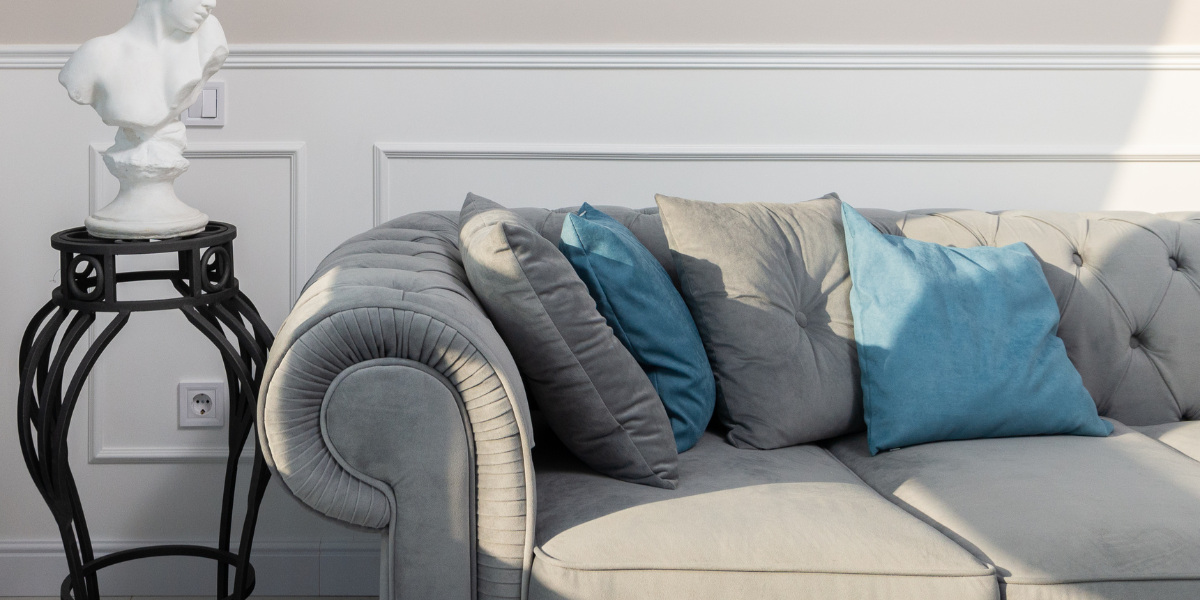
Illustrative image related to microfiber leather
How Can International Buyers Leverage Microfiber Leather?
For international buyers, particularly in Africa, South America, the Middle East, and Europe, establishing robust relationships with reliable suppliers is crucial. By focusing on quality sourcing, businesses can ensure they receive high-grade microfiber leather that meets their specific requirements. Engaging with manufacturers that prioritize innovation and sustainability will not only enhance product offerings but also align with global trends toward responsible consumption.
What Does the Future Hold for Microfiber Leather in B2B Markets?
Looking ahead, the demand for microfiber leather is expected to grow as industries increasingly seek sustainable alternatives. B2B buyers should position themselves to capitalize on this trend by exploring strategic partnerships and investing in market research. Embrace the potential of microfiber leather to differentiate your products and meet the evolving expectations of consumers. Now is the time to act—invest in microfiber leather and secure a competitive edge in your market.
Important Disclaimer & Terms of Use
⚠️ Important Disclaimer
The information provided in this guide, including content regarding manufacturers, technical specifications, and market analysis, is for informational and educational purposes only. It does not constitute professional procurement advice, financial advice, or legal advice.
While we have made every effort to ensure the accuracy and timeliness of the information, we are not responsible for any errors, omissions, or outdated information. Market conditions, company details, and technical standards are subject to change.
B2B buyers must conduct their own independent and thorough due diligence before making any purchasing decisions. This includes contacting suppliers directly, verifying certifications, requesting samples, and seeking professional consultation. The risk of relying on any information in this guide is borne solely by the reader.

Illustrative image related to microfiber leather


